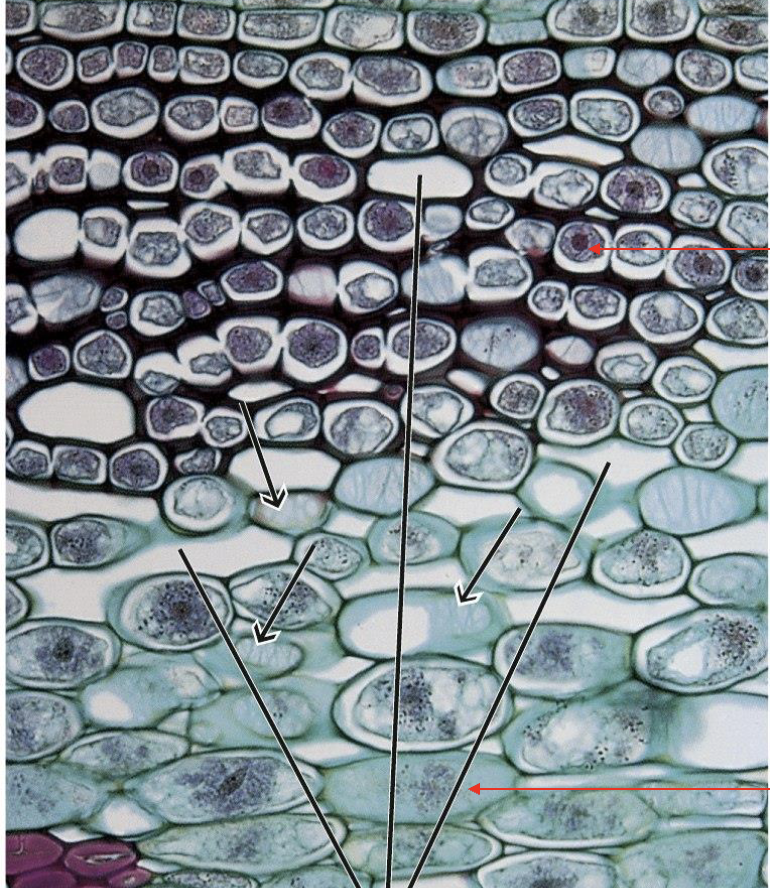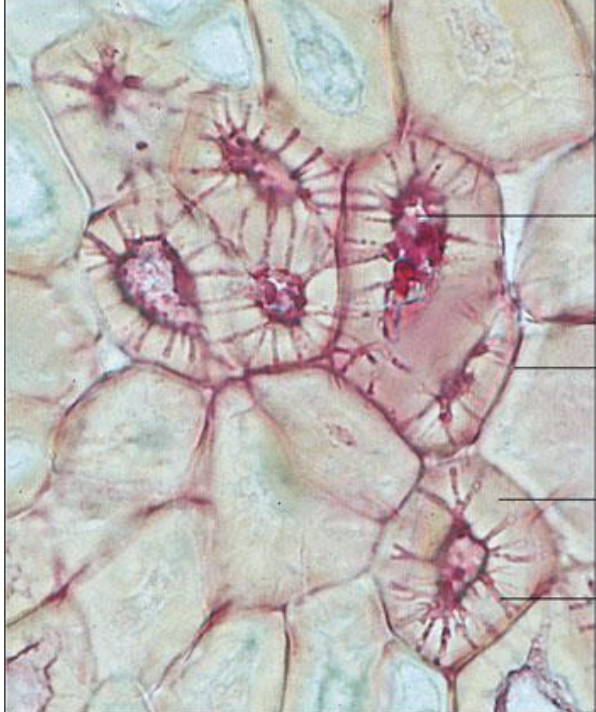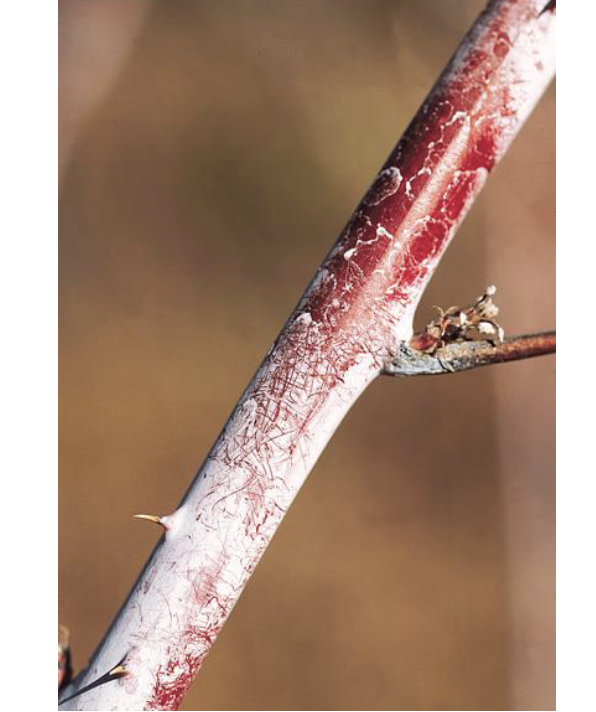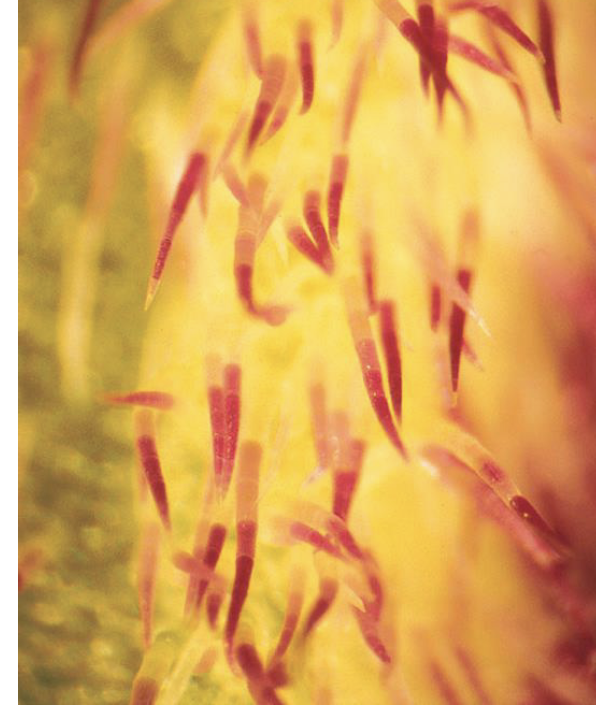Plant Tissues - CH23
1/65
There's no tags or description
Looks like no tags are added yet.
Name | Mastery | Learn | Test | Matching | Spaced |
|---|
No study sessions yet.
66 Terms
what is the meristem?
permanent regions of active cell division
where are apical meristems found?
found at the tips of roots and shoots
apical meristems increase in _______ as it produces new cells
length
the main function of meristems is:
primary growth of the plant
what are the different primary meristems that can come from an apical meristem?
protoderm, ground meristem, procambium
what primary tissue does the protoderm become?
the epidermis or dermal tissue system
what primary tissue does the ground meristem become?
ground tissues (parenchyma, collenchyma and sclerenchyma)
what primary tissue does the procambium become?
primary xylem and primary phloem (vascular tissue system)
what do the lateral meristems produce?
tissues that increase the width of roots and stems
on her slides “width” was “girth”
what are the different types of secondary growth associated with lateral meristems?
vascular cambium and cork cambium
what is the function of vascular cambium?
it produces secondary tissues that function primarily in support and conduction
thin cylindrical cells
what secondary tissues does vascular cambium produce?
xylem and phloem
where is cork cambium located?
lies outside the vascular cambium just inside the outer bark
cork cambium gives rise to _____ cells
cork
T or F: cell division occurs at the protoderm, apical meristem, and procambium
True
Grasses and related plants do not have vascular cambium or cork cambium, but do have___________ in the vicinity of the nodes
apical meristems
were do the intercalary meristems develop?
at intervals along stems where they add to stem length
the plant body has 3 tissue system:
ground tissue system
vascular tissue system
dermal tissue system
the xylem is a vascular tissue that functions primarily in the distribution of _______
water
the phloem is a vascular tissues that functions primarily in the distribution of _______
sugar/food
simple tissues can be classified as:
tissues that are produced by meristems and composed of one cell type
what are the three types of simple tissues?
parenchyma, collenchyma, and sclerenchyma
what is parenchyma?
composed of parenchyma cells. tends to have large vacuoles and many contain various secretions
parenchyma only has the primary cell wall. T or F?
True
what are the two subtypes of parenchyma?
Aerenchyma and Chlorenchyma
what is aerenchyma?
parenchyma tissue with extensive connected air spaces
these plants can float on the surface of water due to their air bubbles that give them
what is chlorenchyma?
parenchyma cells containing chloroplasts
ex: elodea cells
the most basic and abundant simple tissue is:
parenchyma
what is collenchyma?
containing living cytoplasm and may live an extended time, elongated, with primary cell wall
collenchyma provides ________ for young organs
flexible support
collenchyma cells are characterized by their _________ at the corners of the cell
thickened walls

which cells are shown in the top half of this picture vs the bottom half?
Collenchyma; Parenchyma
uneven cell wall is indicative of a __________ cell.
collenchyma
what are sclerenchyma?
cells with thick, tough, secondary walls, normally impregnated with lignin.
what is the function of sclerenchyma cells?
it provides rigid support to the plant
what are the two types of sclerenchyma?
sclereids- stone cells
fibers - contain lumen (tiny cavity)
what is lignin?
an organic polymer

what is this an image of?
stone cells of a pear
what are complex tissues?
tissues made up of two or more cell types
what is the xylem?
the chief conducting tissue for water and minerals that is absorbed the roots
what are the different tracheary elements?
vessel elements, tracheids, and fibers and parenchyma cells h
what are vessel elements?
long tubes open at each end/perforations, with secondary cell wall have pits
what are tracheids?
tapered at the ends with pits (cavities in the cell wall) that allow water passage between cells
stacked pits allow for movement of water and minerals horizontally b/w cells
T or F: perforation plates in vessel elements can have a single opening or can have ladderlike bars
True
what are pits?
cavities in the cell wall
what is the phloem?
conducts dissolved food minerals produced by photosynthesis throughout the plant
what are sieve elements?
sieve tube elements and companion cells
what are sieve tube elements?
large, cylindrical cells w/o secondary walls, no nuclei at maturity
sieve plates: porous regions
what are companion cells?
narrow, tapered cells with nuclei
T or F: phloem is composed of sclereids, fibers, and parenchyma cells
True
the companion cells can be thought of as ________ for the cell
life support
what is the xylem in gymnosperms?
tracheids
what is the xylem in angiosperms?
vessel elements
what is the phloem in gymnosperms?
sieve cells (w albuminous cells)
what is the phloem in angiosperms?
sieve-tube elements (w companion cells)
what is the epidermis?
complex tissue, outermost layer of cells
what is the function of the epidermis?
to provide protection for the plants
the epidermis is how many cells thick?
one
what are some characteristics of the epidermis?
most secrete fatty substances, cutin, on the surface of the outer walls
forms the cuticle
root epidermal cells produces root hairs
leaves have stomata bordered by pairs of guard cells

what is this image depicting?
waxes that are produced by the epidermis on the stem of black raspberry

what is this image depicting?
hairs on the surface of a mint plant (epidermis)
what is the periderm?
the outer bark of a plant
the periderm is primarily composed of _____ cells
cork
what does the cytoplasm of cork cells secrete into the walls?
suberin
what are lenticels and what is their function?
part of the periderm that is composed of cork cambium thats formed into loosely arranged pockets of parenchyma cells that protrude thru the surface of the periderm
function in gas exchange
what is a dicot stoma?
a microscopic pore on the surface of a dicotyledonous plant's leaf, surrounded by two kidney-shaped guard cells that regulate its opening and closing to control gas exchange for photosynthesis and prevent water loss